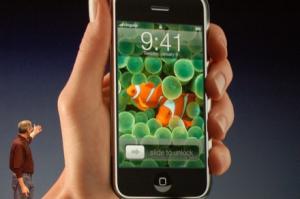I recently got back from visiting family in Ireland, and one of the things that I did during the trip was "fixing" the family's computer. I say fix loosely because all I really did was uninstall some really shitty software, namely by a company called Symantec. The family had a decent enough computer (P4 3ghz, 512mb RAM), but no matter what they were doing, the hard disk would grind away relentlessly. Normal events like starting Window XP's Control Panel or starting an application would require an annoyingly noticeable delay, even on a cold boot with nothing else running. Clearly something was amiss.
Since there was a big ugly Norton button permanently stuck on the taskbar, I didn't have to do much diagnosis. It turns out that Joe, my distant Irish relative, followed the instructions that popped up after the computer's pre-installed copy of Norton Anti-virus complained of expiring. Being extremely safety oriented, Joe happily went along with the scary messages NAV was popping up, and via dial-up purchased the entire Symantec Norton Internet Security Suite, and, get this, Symantec Norton SystemWorks. He spent 2-3 nights downloading and installing the applications that were supposed to help his system but instead turned it into an unbearably slow, useless piece of shit - Swiss-cheese Windows XP home propped up by a few hundred megs of prime, bloated, Symantec harmware.
I explained to Joe what I thought should happen with the computer, and he quickly agreed that we should replace Symantec. After uninstalling Symantec's LiveUpdate, Norton Internet Security, and SystemWorks through Windows' Add/Remove Programs, the uninstaller asked to reboot. Great, I thought, we're almost done. Nope, on reboot, Norton GoBack took another hour to uninstall itself (what kind of application takes that long to uninstall?). After that was finally over, the computer booted into Windows and was instantly cured of its' Norton ailment. GUI interactions were snappy again and the hard drive wasn't on 100% grind mode.
Being the safety-oriented person that Joe is, he was clearly uncomfortable with losing an antivirus program, a firewall, an anti-spyware program, and the system restoration that the Symantec harmware "provided." Personally I wouldn't have bothered with any of that stuff, but to make Joe comfortable, we turned to free software to take care of it all. The firewall and system restoration was already built into Windows XP SP2, so we turned those on. Anti-spyware was taken care of by Windows Defender, a free download from Microsoft. That left only anti-virus, which I wanted to use WinClam, but then realized that WinClam doesn't yet provide realtime, in-memory protection. So I turned to Grisoft's free AVG Anti-virus. Although it took quite a while to download all of these on Joe's dialup connection, after it was all configured Joe's computer ran like new, and he seemed quite happy with the result.
While it all turned out nicely for Joe, there are millions of other novice, but willing and trying, computer users who just don't know any better. They see strange and scary pop-up messages instructing them that they must renew or upgrade their Norton subscription or else their computer is in grave danger. But the real problem is that instead of making these computers perform any better, harmware like Norton actually make computers less usable. They are constantly popping up annoying messages, taking up valuable screen real-estate with useless and fear-inducing messages, and most importantly taking up essential computer resources for not a whole lot of good (actually, not too far off from the Bush administration's tactics on the War on Terror - fear-mongering terror alerts, anyone?).
And not us forget the foundation problem of all of this - Microsoft is solely responsible for the sorry state of tens of millions of computers worldwide. An operating system should not be so insecure, and have such a long history of insecurity, that users are inclined to believe whatever greedy software vendors try to sell them in order to "fix" their computers. The worldwide loss of time and money, and the inefficiencies caused by Microsoft are incalculable. The only way to fix this is to use and recommend to others a better operating system.
I told Joe to look into getting an Apple next time he's in the market for a replacement computer, and I hope he'll heed my advice.
